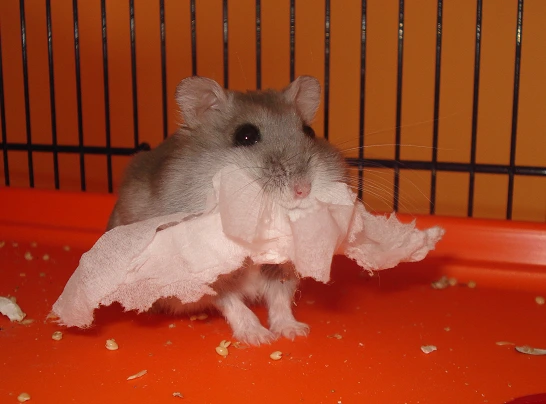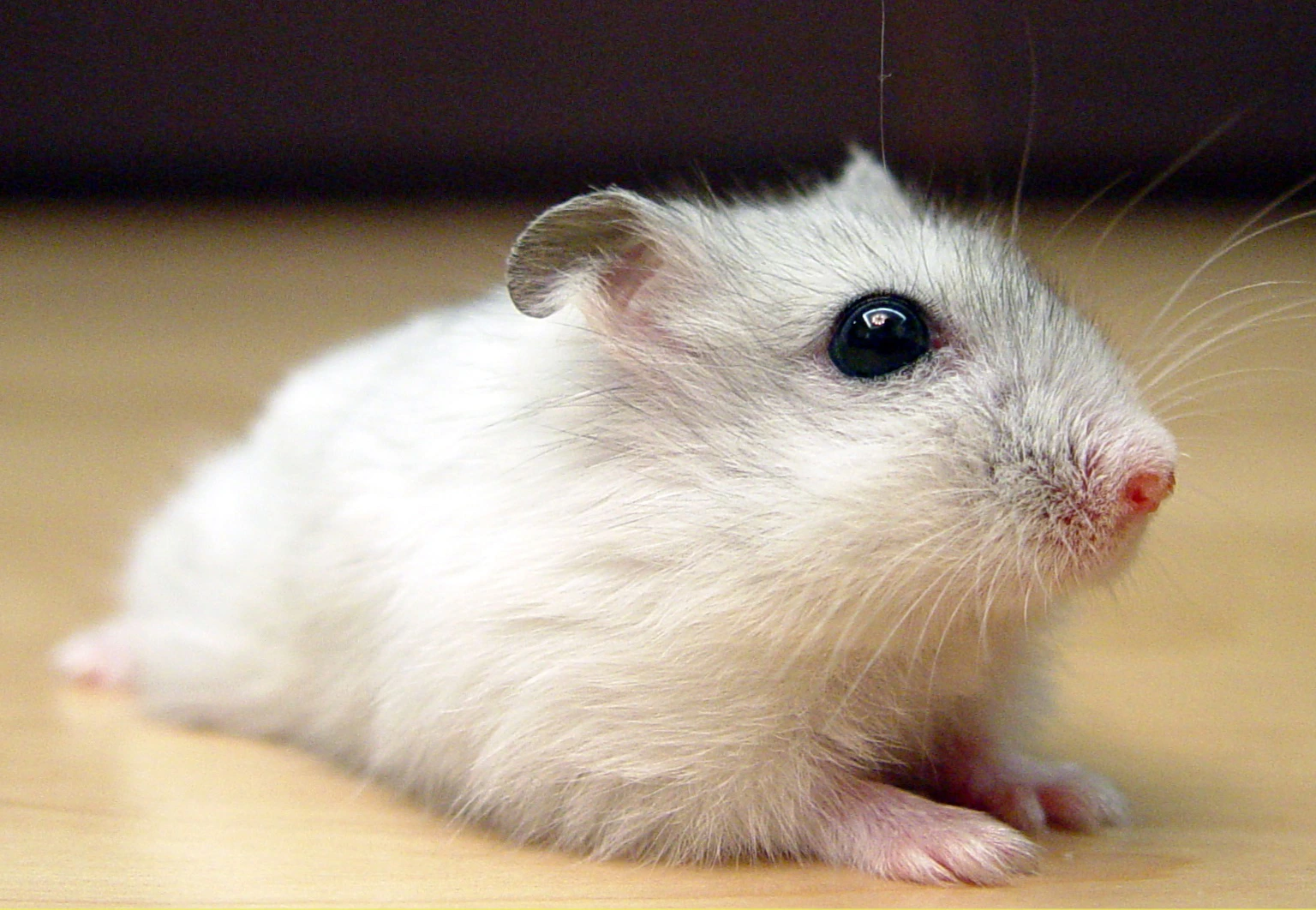Introduction
Winter White Hamsters are the cutest little fluff balls you’ll ever lay your eyes on. Perfect for anyone looking for a low-maintenance, adorable pet, these tiny creatures have a lot to offer. Buckle up, because we’re about to dive into everything you need to know about these pint-sized pals.
Origins and Natural Habitat
Winter Whites, also known as Siberian or Djungarian Hamsters, hail from the chilly lands of Siberia and Kazakhstan. These little furballs are well-adapted to cold climates and can often be found burrowing in the snow. They’re like the ultimate winter warriors, with fur coats that would make Jon Snow jealous.

Physical Characteristics
These hamsters are small, typically measuring 3-4 inches in length. Their coat color changes with the seasons, ranging from a dark gray or brown in the summer to a snowy white in the winter. It’s like having a tiny, living mood ring! And don’t even get me started on their adorable, round faces. Swoon.
Personality and Temperament
Winter Whites are social butterflies, known for being friendly and relatively easy to handle. They’re also nocturnal, so they’ll be up and ready to party when you’re winding down for the night. Just remember to approach them gently and with patience, and you’ll have a new BFF in no time.
Diet and Nutrition
These little guys are omnivores, meaning they’ll eat both plant and animal-based foods. A balanced diet of commercial hamster food, fresh veggies, and occasional treats like mealworms or boiled eggs will keep them happy and healthy. Just don’t overdo it on the treats – we don’t want any chubby hamsters rolling around! Here’s a brief overview of what they CAN eat:
Commercial hamster food
This can be either a seed mix or pelleted food specifically designed for hamsters. These foods are formulated to provide all the essential nutrients your hamster needs. Make sure to choose a high-quality product to ensure your pet receives the best nutrition possible.
Fresh vegetables
Vegetables like carrots, broccoli, cucumber, and bell peppers can be given to your hamster in small quantities. These provide essential vitamins, minerals, and fiber to support their overall health. Make sure to wash the vegetables thoroughly before feeding them to your hamster, and remove any uneaten vegetables after a few hours to prevent spoilage.
Leafy greens
Spinach, kale, and lettuce can also be included in your hamster’s diet. These greens are rich in vitamins and minerals, but they should be fed in moderation as they can cause diarrhea if given in large quantities.
Fruits
Fruits such as apples, pears, and bananas can be given as occasional treats. They are high in natural sugars, so they should be fed sparingly to prevent weight gain and diabetes. Make sure to remove any seeds or pits before feeding them to your hamster.
Protein
Winter White Hamsters can benefit from small amounts of animal-based protein sources like mealworms, crickets, and boiled or scrambled eggs. These foods provide essential amino acids and should be fed in moderation, as too much protein can lead to health issues.
Whole grains
Cooked brown rice, barley, or quinoa can be offered to your hamster for added variety and nutrition. These grains are rich in fiber and nutrients, but they should be fed in small amounts to prevent overfeeding.
Nuts and seeds
Sunflower seeds, pumpkin seeds, and small amounts of unsalted nuts like almonds and walnuts can be given as occasional treats. These foods are high in healthy fats and should be fed sparingly to prevent obesity.
Housing and Environment
A spacious cage with a solid floor and plenty of bedding is the perfect home for a Winter White. Make sure to include a hideaway for them to snuggle up in and feel safe. And, of course, don’t forget the water bottle – hydration is key! Keep their environment clean by spot-cleaning daily and doing a full cage clean at least once a week.

Stimulation and Exercise
Keep your hamster entertained with toys, tunnels, and a wheel for running. Regular playtime outside of their cage is also important for mental stimulation and bonding. Just be sure to keep an eye on them – these little escape artists are known for their Houdini-like skills. Here are some variety of toys and accessories you can include in their enclosure:
Exercise wheel: Ensure the wheel is solid (no wire rungs) and an appropriate size (minimum 6.5 inches in diameter) for your hamster’s comfort and safety.
Tunnels and tubes: Hamsters enjoy exploring and hiding in tunnels, which can be made from cardboard or purchased specifically for hamsters.
Climbing structures: Wooden or plastic platforms and ladders can provide additional opportunities for exercise and exploration.
Chewing toys: Hamsters need to chew to maintain healthy teeth. Provide wooden or mineral chews and untreated, pesticide-free branches from fruit trees.
Sand bath: A shallow dish filled with chinchilla sand can provide a place for your hamster to groom and maintain its coat.
Health Concerns and Lifespan
With proper care, Winter White Hamsters can live 2-3 years. Like all hamster species, they can be prone to health issues such as:
Respiratory infections: Signs include sneezing, wheezing, and discharge from the eyes or nose. Consult a veterinarian for appropriate treatment.
Diabetes: Winter White Hamsters are particularly prone to developing diabetes. Monitor their diet carefully and watch for signs such as excessive thirst and urination.
Wet tail: A bacterial infection causing severe diarrhea, which can be life-threatening if left untreated. Consult a veterinarian immediately if you suspect wet tail.
Overgrown teeth: Regularly provide chewing toys and monitor your hamster’s teeth to ensure they don’t become overgrown and cause difficulty eating.
Regular vet check-ups will help keep your tiny friend in tip-top shape..
Breeding and Reproduction
If you’re thinking about breeding your Winter Whites, be prepared for a lot of baby hamsters! The females can give birth to up to 10 pups at a time. Talk about a full house! While this can be an exciting and rewarding experience, it also requires proper planning, knowledge, and commitment. Here’s an in-depth look at the breeding and reproduction process in Winter White Hamsters:
Sexual Maturity
Winter White Hamsters reach sexual maturity at around 4-6 weeks of age. However, it is advisable to wait until they are at least 3-4 months old before attempting to breed them. This is to make sure they are fully mature and healthy enough to handle the physical demands of pregnancy and raising a litter.
Selecting a Breeding Pair
When selecting a breeding pair, go for healthy, unrelated individuals with no known genetic issues. This prevents potential health problems and genetic defects in the offspring. Both the male and female must be the same species (Winter White) to avoid hybridization, which can cause health issues in offspring.
Introducing the Breeding Pair
Introduce the male and female Winter White Hamsters in a neutral environment, such as a clean, empty cage or playpen. This helps to prevent territorial aggression. Keep a close eye on their interactions, as some initial chasing and nipping may occur. If the pair seem to be getting along, you can transfer them to the female’s cage for mating. Remove the male after mating has occurred to prevent potential aggression and to allow the female to prepare for her pregnancy.
Gestation and Pregnancy
The gestation period for Winter White Hamsters is around 18-25 days. During pregnancy, provide the mother with a balanced diet, including protein sources like boiled eggs or mealworms. Also, make sure her environment is clean, comfortable, and stress-free.
Birth and Newborn Care
The newborns will be hairless, blind, and deaf at birth. Avoid disturbing the mother and her litter during the first week. This can cause stress and lead to the mother canibalizing her young.
During the first two weeks, the mother will nurse and care for her pups — make sure to provide her with plenty of food and water to support her energy needs during this time. After about two weeks, the pups will begin to open their eyes, grow fur, and explore their environment.
Weaning and Separation
At around 3-4 weeks of age, the pups will be weaned and can start eating solid food. At this point, separate the male and female pups to prevent inbreeding and potential aggression. Watch the pups for signs of health problems or developmental issues. Consult with a veterinarian if necessary.
Tips for Winter White Hamster Owners
- Be patient when handling your hamster, especially at first
- Keep their environment clean and well-maintained
- Monitor their diet to prevent obesity
- Provide plenty of exercise
- Regular vet visits are a must
Common Misconceptions
Winter White Hamsters are often mistaken for their close relatives, the Campbell’s Dwarf Hamster. While they share similarities, they’re distinct species with different care requirements. You should know which species you have, in order to provide the best care possible.
Winter White vs. Other Hamster Species
Compared to other hamster species, Winter Whites are known for their friendly and sociable nature, making them excellent pets for beginners and experienced hamster owners alike. Their smaller size also means they require less space than larger species like the Syrian Hamster.
Conclusion
Winter White Hamsters are the perfect bite-sized pets for anyone looking for a low-maintenance, adorable companion. With proper care and attention, these little guys will bring joy and love into your life for years to come. So, what are you waiting for? Go out and adopt one ASAP!
